Event Storming is a very simple workshop. A few rules are sufficient. It is also very effective and often useful. I was able to mention it in this article in 2016, and current events are prompting me to talk about it again today.
Event storming is, to paraphrase Thomas Pierrain, a real way to harmonize mental models, in a word to align. It is common to discover people’s surprise when their activity is revealed through visual management via a Kanban system. It’s the same surprise I observe when they focus on sharing their process. Because it is indeed the process that event storming reveals.
The idea of event storming is to make this process visible. To do this, as its creator Alberto reminds us, you need space and tons of stickers. In this space, a timeline is represented by kraft paper over several meters. We’ll stick stickers on it whose color codes will be properly respected, and on which we’ll have taken care to write in capital letters. Then the objective will be to make the process tangible, what happens in real life, on this timeline. The interest being to truly perceive its convolutions, troughs, overloads, all the signals that we don’t see otherwise, and especially to see them all together, with all the actors.
Basic principles
- Thus, a large timeline generally represented by 5 to 10 meters of kraft paper.
- Colored stickers.
- A few hours ahead of us.
- A group of people composed of actors related to the defined process.
Step 1: indicate the events
The events will be the central elements. They are the ones that spread across the timeline. Very importantly, they are described with: an adjective, a verb in past participle: “contracts sent”, “stones polished”, “registration received”, “purchase order generated”, etc. It’s important to keep this formalism. It helps us make these elements temporal markers (on a timeline), and they contain an impact, an action, which is completed.
So we generally start for quite a while only with events. And if you can, normally it’s quite easy, you first ask to define the beginning and the end: what is the first event of the process we want to observe, bring out, and the last one. You mark the starting point and the finishing point.
The timeline fills up with orange stickers. With large groups (12-20 people), subgroups quickly form along the wall generally.
The timeline is not just a line, we see the different paths of the same action.
It’s chaotic. That’s normal. The process that each person has modeled in their own way explodes on this flat surface.
Many conversations flourish everywhere. That’s very good, that’s the objective.
Twenty minutes like an hour or more can be enough.
Finish this step with a storytelling attempt: ask someone, or several people, to tell the process as it appeared. This will probably be an opportunity to review it again, to clarify it, to change it, to align. This may push you to extend this first step.
As a facilitator, you don’t have to reframe many things. Let them take possession of their space. Don’t forget the storytelling.
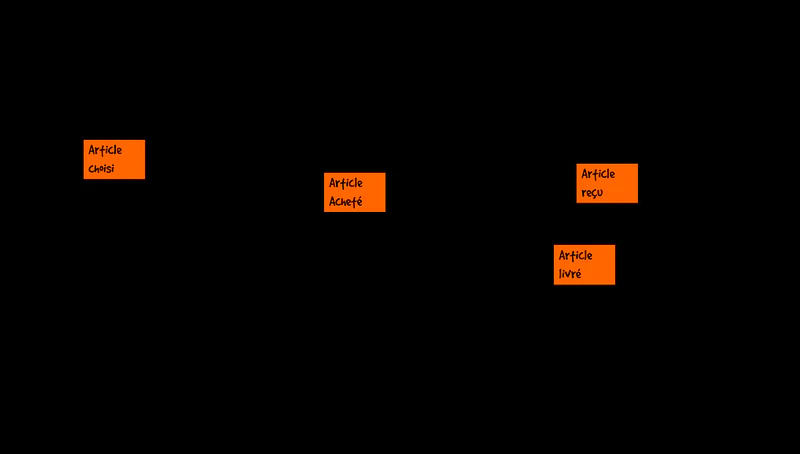
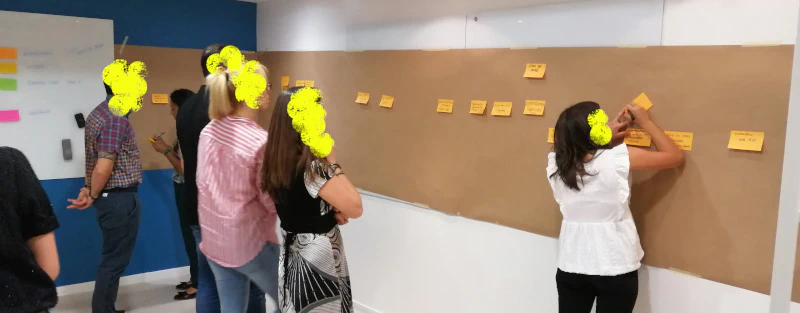
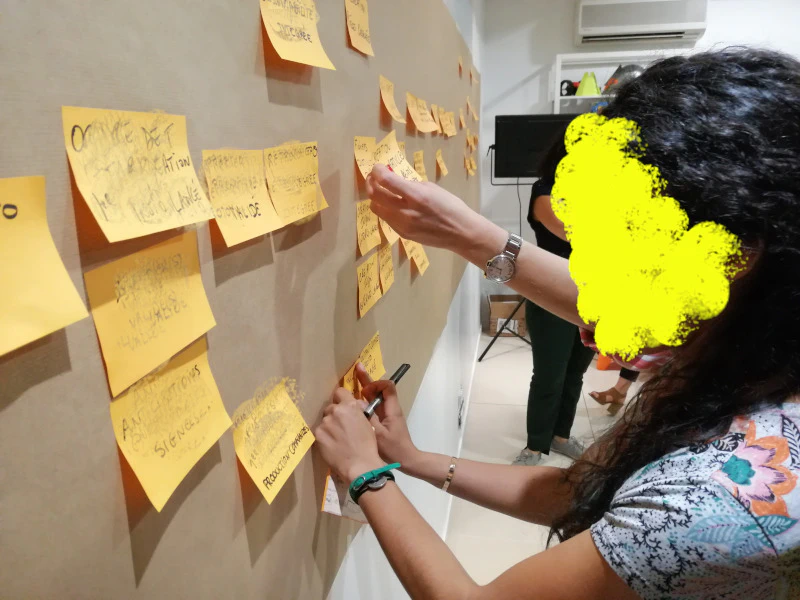
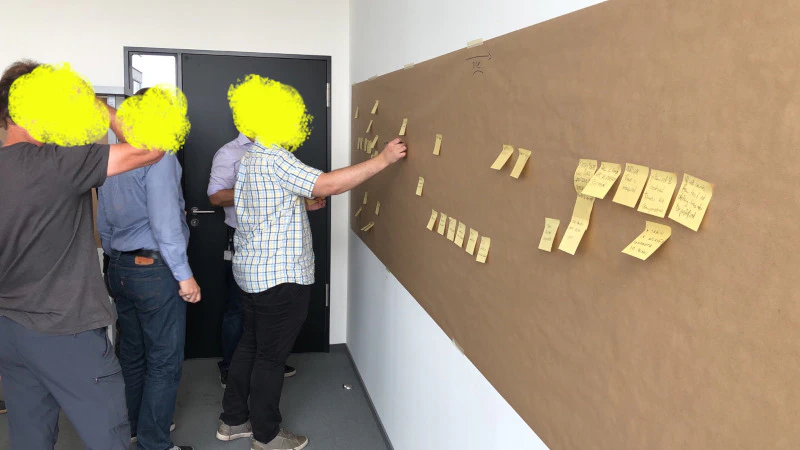
Step 2: actors, data, dependencies
When you think it’s the right time (but I suggest at minimum after the first storytelling phase) you can propose to the actors to place two other types of stickers on the events: the actors (without limit on number), the key data (limited to 3). We limit the data, because otherwise we forget what matters and it’s important to highlight them again. We don’t limit the actors to bring out potential reasons for blocking points (too many actors, or not enough actors).
Finally, you can ask to bring out on a line that overlooks the timeline the dependencies (or on the events): all the dependencies to which the process is subject.
After one, two or three hours, we obtain a nice fresco that represents the process (for example: from the idea of a new product to its availability in stores).
It’s still interesting to resume storytelling, that is to say to tell the events as they flow, as we experience them “in real life” to ensure that the fresco, despite all the crossed looks and conversations, hasn’t strayed too far from reality.
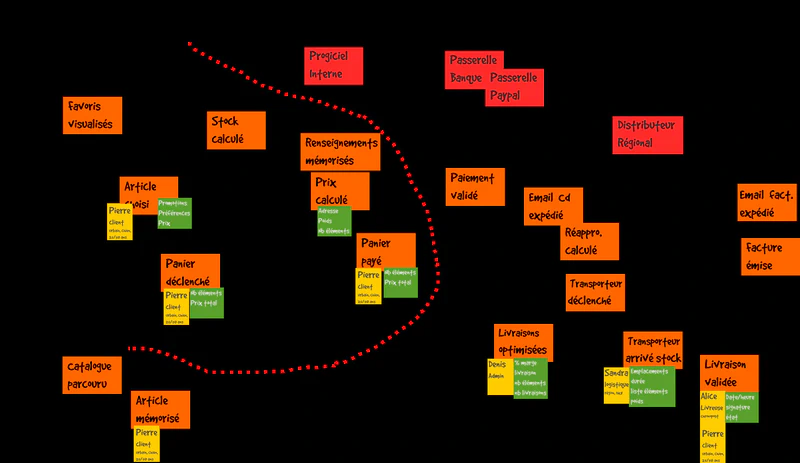
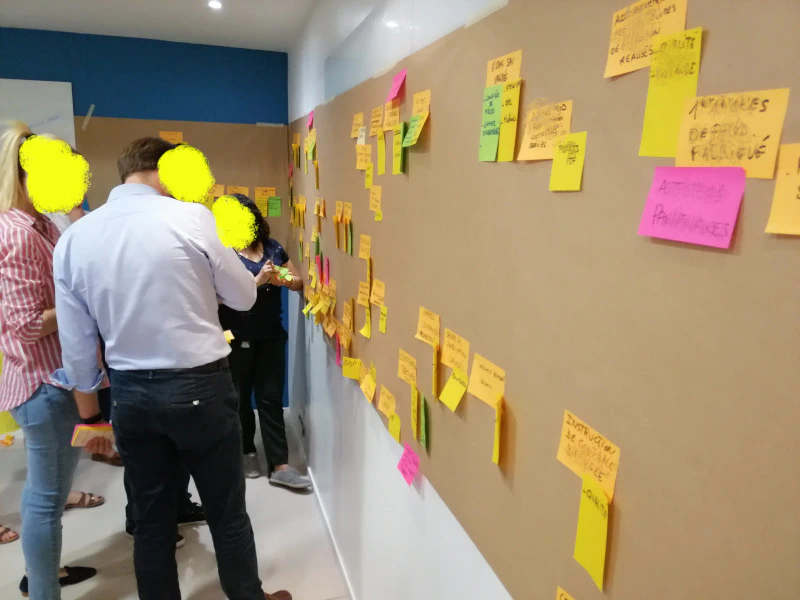
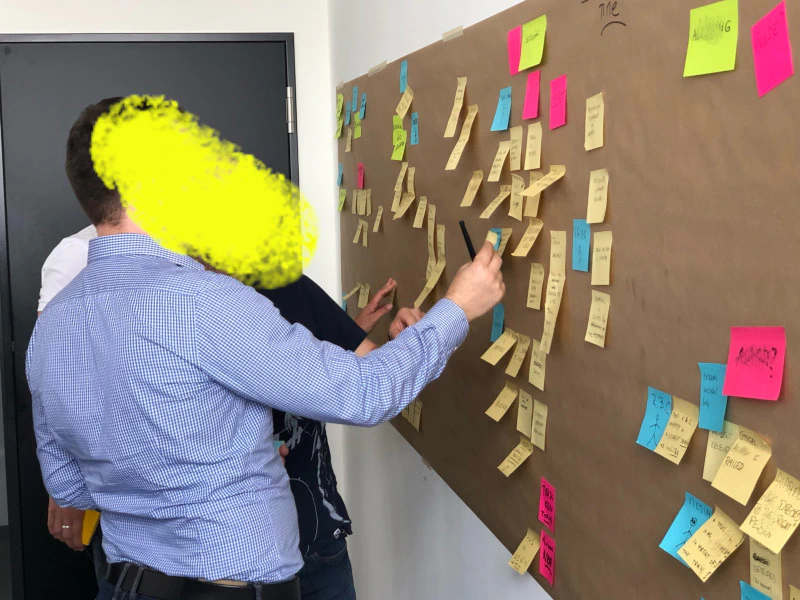
Step 3: your turn to play
Depending on your context, you can decide to add other elements, being careful that they don’t saturate the visual management and still allow us to read things: bottlenecks, troughs, etc. We can cut vertically or horizontally large sets, we can comment on the timeline (write labels). I quite often propose highlighting the key events of the timeline and ask all the questions that will seem interesting. The material offered is generally flexible enough for lots of reflections and conversations, especially since it’s the usual daily life.
Clearly display the “legend” somewhere that indicates which type corresponds to the sticker color. For example, orange for events, yellow for actors, green for data, pink for dependencies.
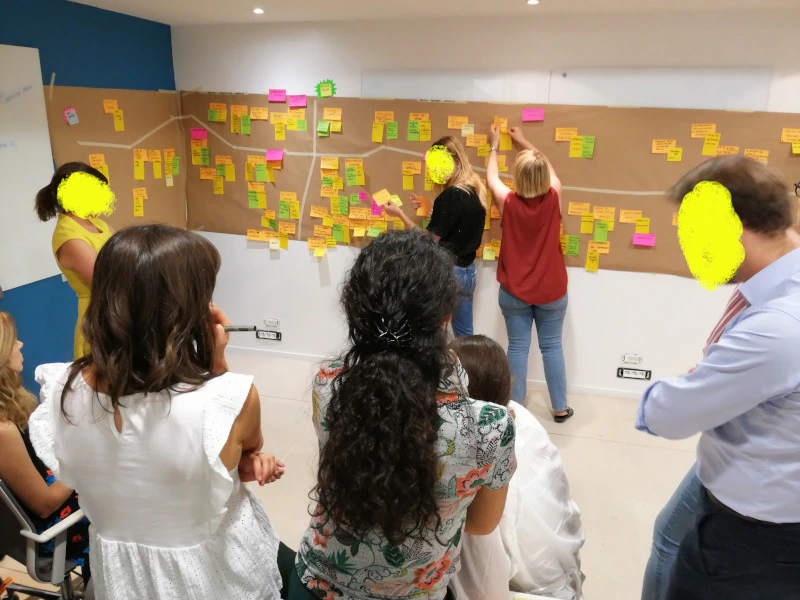
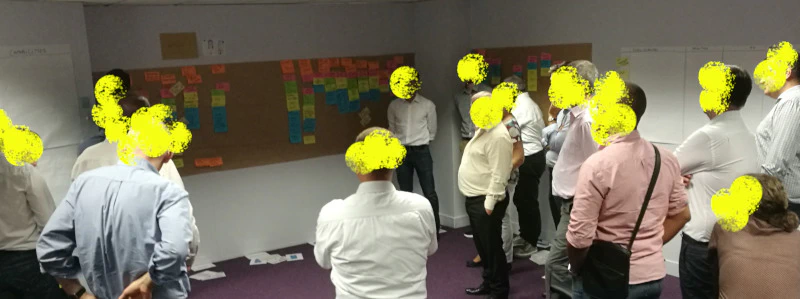
Here is an example that introduces another family of stickers: triggers. This is an element that exists in Alberto’s original event storming. It must not be forgotten that it is originally a tool to make the implicit explicit for development. At the origin of events there are therefore triggers. Each element of an event storming is intended to represent a development concept. In my practice, triggers have also become events, because I don’t often work with code. You will also observe temporal events.
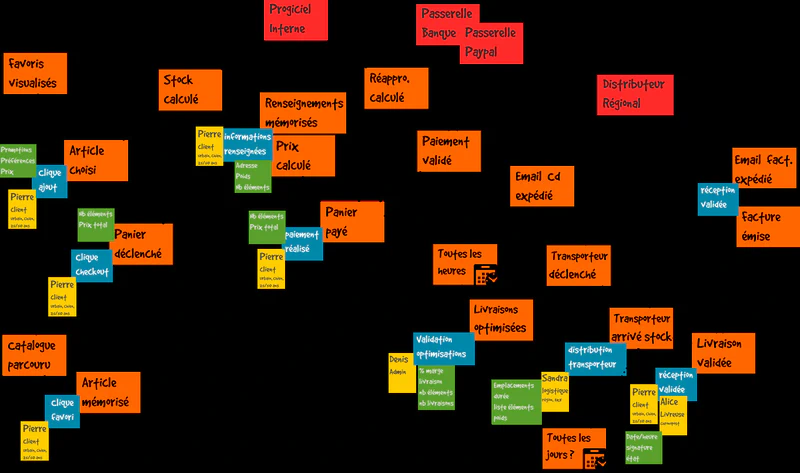
When to use it?
When you need to tune, harmonize, the point of view of different actors on what happens in reality on a subject. Event storming is a large conversation around a process made tangible.
Its result remains ephemeral, the process continues to evolve, the process is not reduced to the choices proposed during the session. But the game of this workshop is largely worth the candle.
What can it initiate?
-
A better understanding by each actor of their role and the process. And thus a rapprochement between actors, better decision-making?
-
A Kanban system: you have a great opportunity to break down the different stages, to highlight the cards that can feed this Kanban system (for example “contract sent” can become a “contracts” card and pass through stages “to do”, “selection”, “in progress”, “done”, to remain very classic)?
-
A recomposition of teams?
-
A work on the process itself: lighten it? Balance it? Strengthen it?
Twitter Feedback
On Twitter Jean-Marie Lamodière reminds – rightly so – that it’s a “chaotic format, provide an experienced facilitator (or get trained)”.